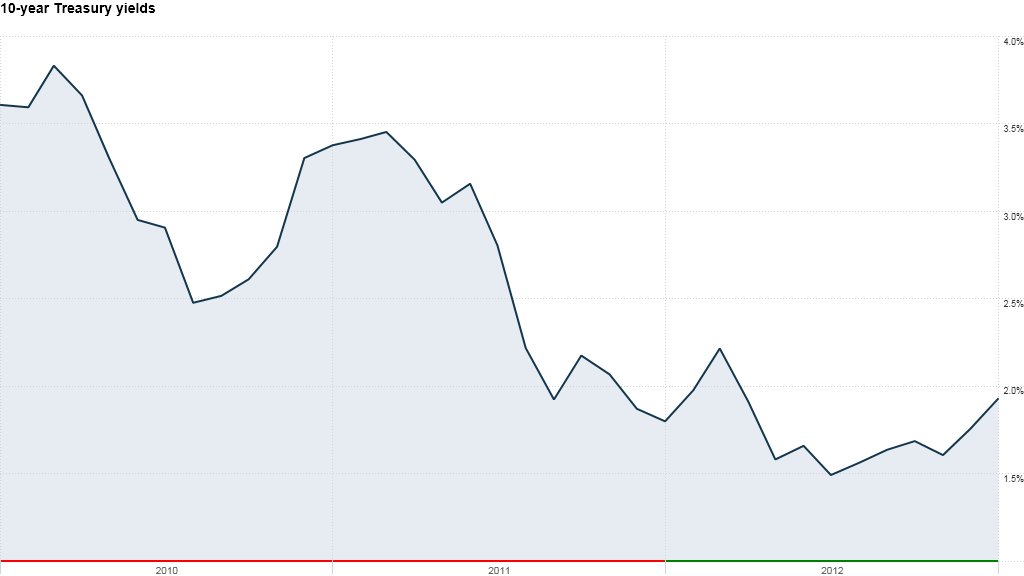After ravenously buying up Treasuries for the past several years, investors have started cashing out, pushing yields higher and dinging their portfolios.
The yield on the benchmark 10-year Treasury note has shot up in the past month, with the biggest spike this week putting it within spitting distance of 2% -- a level not seen since April.
"When you're dealing with an environment with interest rates as low as they are, the moves we've seen could have big implications for your investment portfolio depending on where you're positioned," said James Barnes, senior fixed income manager at National Penn Investors Trust.
For example, if you bought $100,000 worth of 10-year Treasuries on Dec. 6, when yields were around 1.59%, you would have lost $2,900 if you cashed out today.
You would have lost even more if you bought those notes in July, when the 10-year yield hit a record low just under 1.4%. At the current rate of 1.93%, you would have lost $3,100, although the semiannual coupon payment of $875 would have helped offset some of those losses.
Over the past month, bond funds have also taken a hit. Pimco's Total Return Bond Fund (PTTRX) is down more nearly 4% since Dec. 6, Vanguard's Total Bond Market Index Fund (VBMFX) shed 1.4% and the iShares Barclays 7-10 Year Treasury Bond Fund (IEF) slid 2.3%.
Related: Beware the bond bubble in 2013
Treasuries have been a winning bet for the past several years. In early 2010, the 10-year yield hovered around 3.8%, but it's been steadily declining since then. The Bank of America/Merrill Lynch 10-Year Treasury Index posted returns of 8% in 2012; 17% in 2011; and 4% in 2012.
Some investors think yields will remain low ... for now. Bret Barker, head of rates strategy at TCW, thinks Treasuries are oversold and will continue to trade in a narrow range between 1.6% to 2.1% this year.
But longer-term, he's playing defense.
"We can't expect the kinds of gains we've seen over the last few years, because there's not that much lower rates can go," said Barker.
Other investors are predicting that if economy rebounds faster than expected and the unemployment rate ticks below 6.5%, the Fed's intervention in the bond market could end swiftly, causing Treasury yields to soar and prices to drop. The biggest concern is that yields could quickly return to the 3%-to 4% range seen in 2010.
Related: The looming disaster the Fed's stress tests miss
Still, Doug Cote, chief market strategist at ING Investment Management, points out that Treasuries should be viewed as a hedge in any investors' portfolio. "I own bonds for volatility control, so I can own more stocks," Cote says.
Investors could have more than offset any losses from Treasuries over the past month and a half by holding a basket of stocks. "If yields jump to 3%, your equity portfolio will skyrocket, so you'll be more than rewarded if the economy improves." Alternately, if the economy doesn't improve, Cote argues that Treasuries and other bonds could provide a nice return to investors to offset losses in the stock market.



